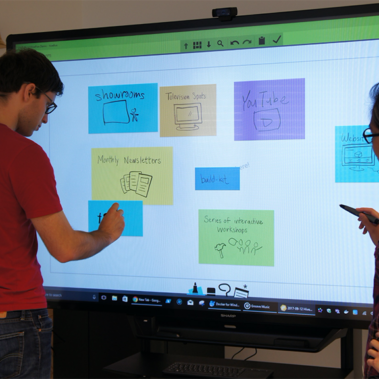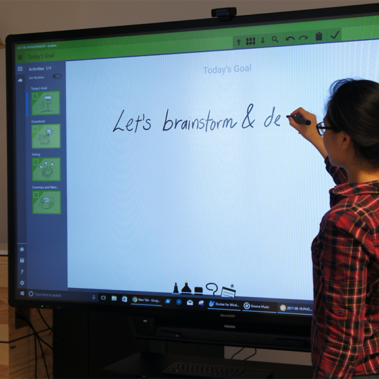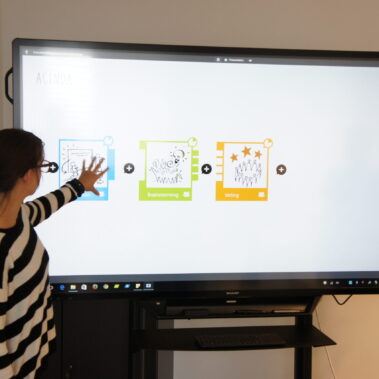Innovation Playground
October 2017
Run Time:
3 years
Partners:
BENE GmbH, FH OÖ Forschungs- & Entwicklungs GmbH (MIL,sprint>>Lab), University of Tokyo
Funding:
FFG Beyond Europe
Innovation Playground
Foxel
Introducing interactive components into furniture has proven difficult due to the different lifespans of furniture and digital devices. We present Foxels, a modular, smart furniture concept that allows users to create their own interactive furniture on demand by simply snapping together individual building blocks. The modular design makes the system flexible to accommodate a variety of interactive furniture setups, making it particularly well-suited for re-configurable spaces. Considering the trade-off between ease-of-use and high versatility, we explore a number of interaction methods that can be applied to modular interactive furniture, thereby extending the well-known tangible programming paradigm. After explaining our implementation, we demonstrate the validity of the proposed concepts by presenting how Foxels can be used in an ideation workshop along with many additional real-world examples.
- Florian Perteneder, Kathrin Probst, Joanne Leong, Sebastian Gassler, Christian Rendl, Patrick Parzer, Katharina Fluch, Sophie Gahleitner, Sean Follmer, Hideki Koike, and Michael Haller. 2020. Foxels: Build YourOwn Smart Furniture. In Fourteenth International Conference on Tangible, Embedded, and Embodied Interaction (TEI ’20), February 9–12, 2020, Sydney, NSW, Australia. ACM, NewYork, NY, USA, 12 pages. https://doi.org/10.1145/3374920.3374935
Hive5
Collaborative workshops and creative work within project teams are important parts of thriving innovation. They involve many stakeholders and take multiple forms as dependent on the concrete task different processes, such as Design Thinking, Open Innovation, or Business Model Innovation are applied. Moreover, they are adapted to the team, timeframe, and the circumstances in general. This requires good preparation while still ensuring flexibility during the execution and a thorough summary of the results.
The goal of Hive5 (H5), is to provide a digital workflow for the plan, execute, and post-process creative, collaborative workflows. The idea is to create a highly customizable system that combines support on a methodology as well as tool level, while also taking the physical environment into account. As such H5 can be considered a module-based platform that provides workshop facilitators and team leads with the possibility to design their own workflows and run them within their workshops or meetings.
During early tests, we realized that he system was lacking flexibility during the execution of the creative processes, whereas we adapted the design to also allow for changes of the schedule while already running the meeting or workshop. One of the most useful features became the feature for summarizing the data of an entire collaborative session a single exported file (Powerpoint) that can instantly be shared with the participants after the meeting.
Mimicking analog collaborative working styles on flip-charts and whiteboards, the H5 Frontend was designed for the use on interactive whiteboards, such as the MS Surface Hub or the Sharp BigPad, using stylus and touch input. However, activities in workshops are not always carried out in a big plenum group but also in smaller subgroups or even individually. Due to the design of H5 in a client-server architecture, users can join an active session from other devices and contribute in parallel. Besides the use on interactive whiteboards, it can also be run smaller stylus-based devices (e.g. MS Surface) and – in a slightly restricted form – even on regular windows laptops using typed text instead of strokes.
Hive 5 was used for a considerable number of workshops within the Media Interaction Lab with students in the university course “Physical Prototyping” as well as repeatedly with external company partners (e.g. BMW). Moreover, during the development and beyond it was used as the main collaborative meeting tool with the lab, which helped to understand the needs and polish the workflows. The versatile nature of Hive 5 also enabled the use as a Graphical Recording tool at bigger events, such as the Forum for Innovation, where it was used live on stage to collect the essence of an entire day.




























